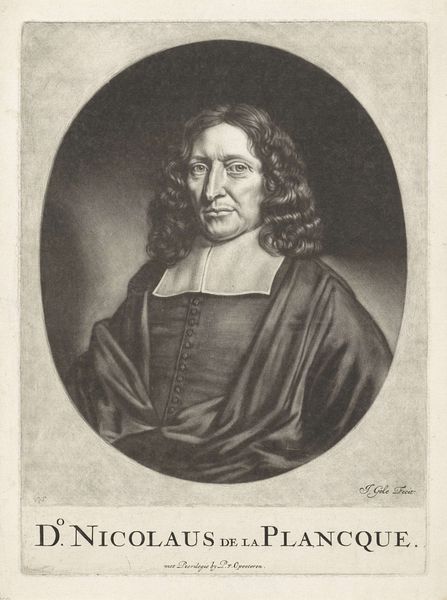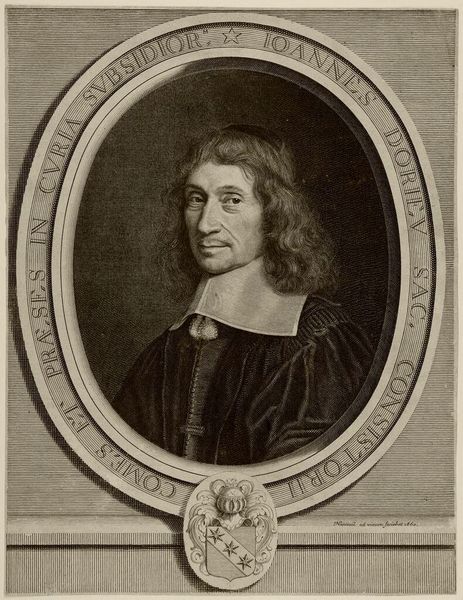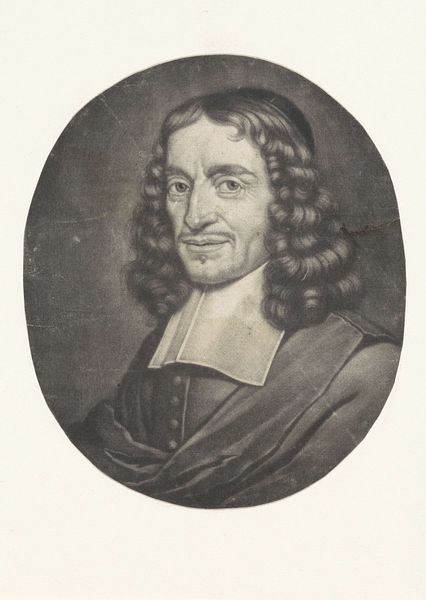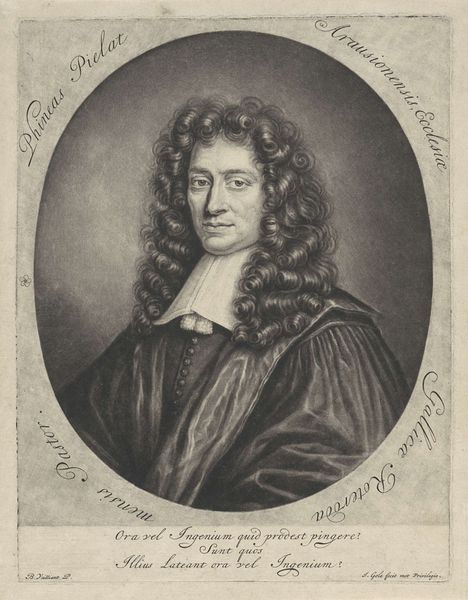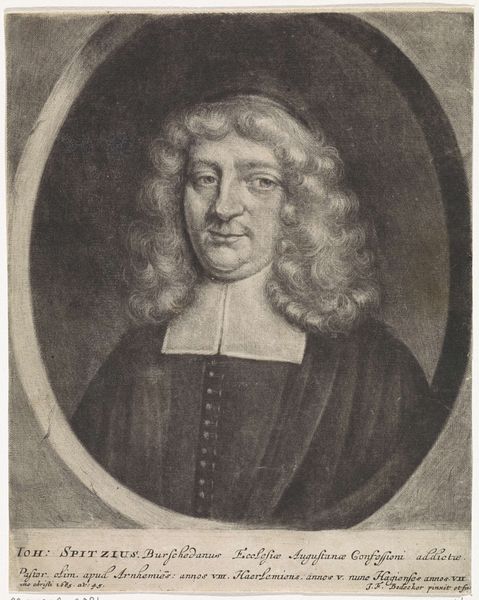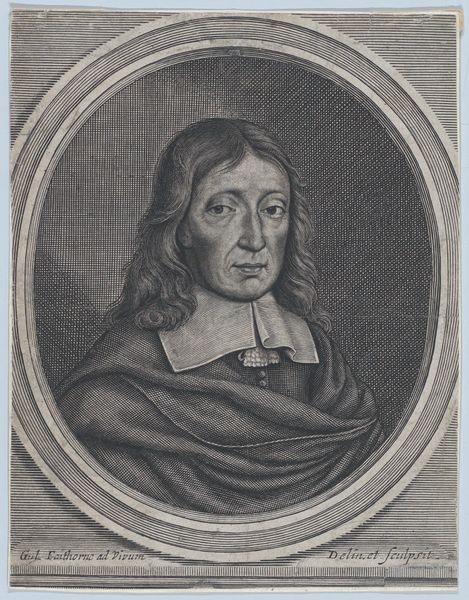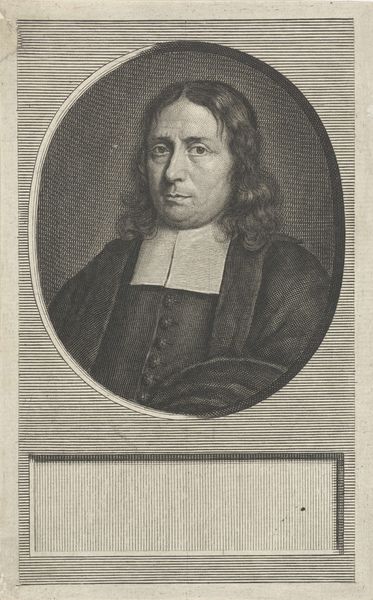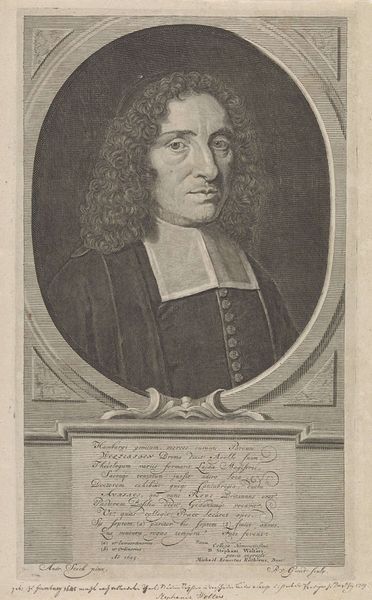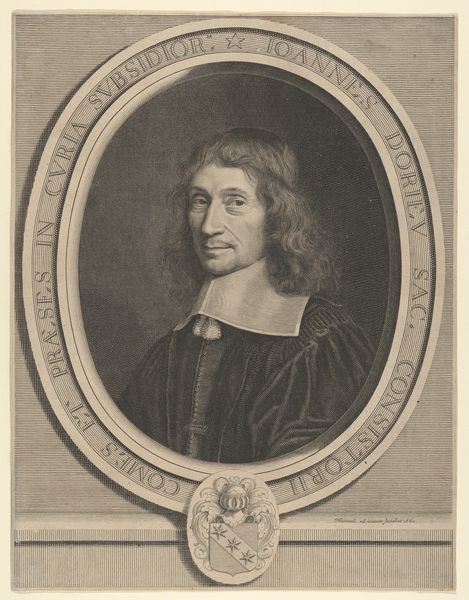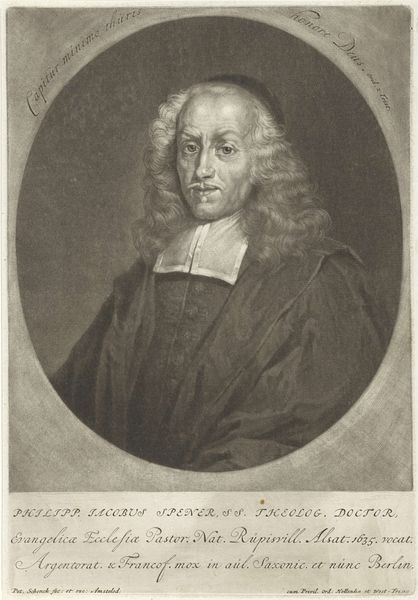
print, engraving
#
portrait
#
baroque
#
dutch-golden-age
# print
#
old engraving style
#
pencil drawing
#
line
#
engraving
#
realism
Dimensions: height 288 mm, width 210 mm
Copyright: Rijks Museum: Open Domain
This is Jacob Gole’s portrait of Nicolas Colvius, an engraving printed on paper. The image isn’t drawn, but rather incised into a metal plate, which then transfers the ink onto the paper. Look closely, and you’ll notice that the details – Colvius’s hair, the folds of his robe, even the subtle shading on his face – are all built up from tiny lines. This is the engraver's art, building images from the smallest possible marks. The result is a precision that's quite distinct from drawing or painting. Engraving was a key process in the creation and distribution of images in the early modern period. Portraits like this one could circulate widely, helping to establish the sitter's reputation. Though Gole himself was a skilled artist, his work also served the interests of his patrons, connecting him to the wider world of labor, politics, and consumption. Ultimately, this engraving invites us to consider how technical skill, social function, and artistic expression are intertwined. It blurs the line between craft and fine art, reminding us of the value in understanding the processes behind the images we see.
Comments
No comments
Be the first to comment and join the conversation on the ultimate creative platform.
